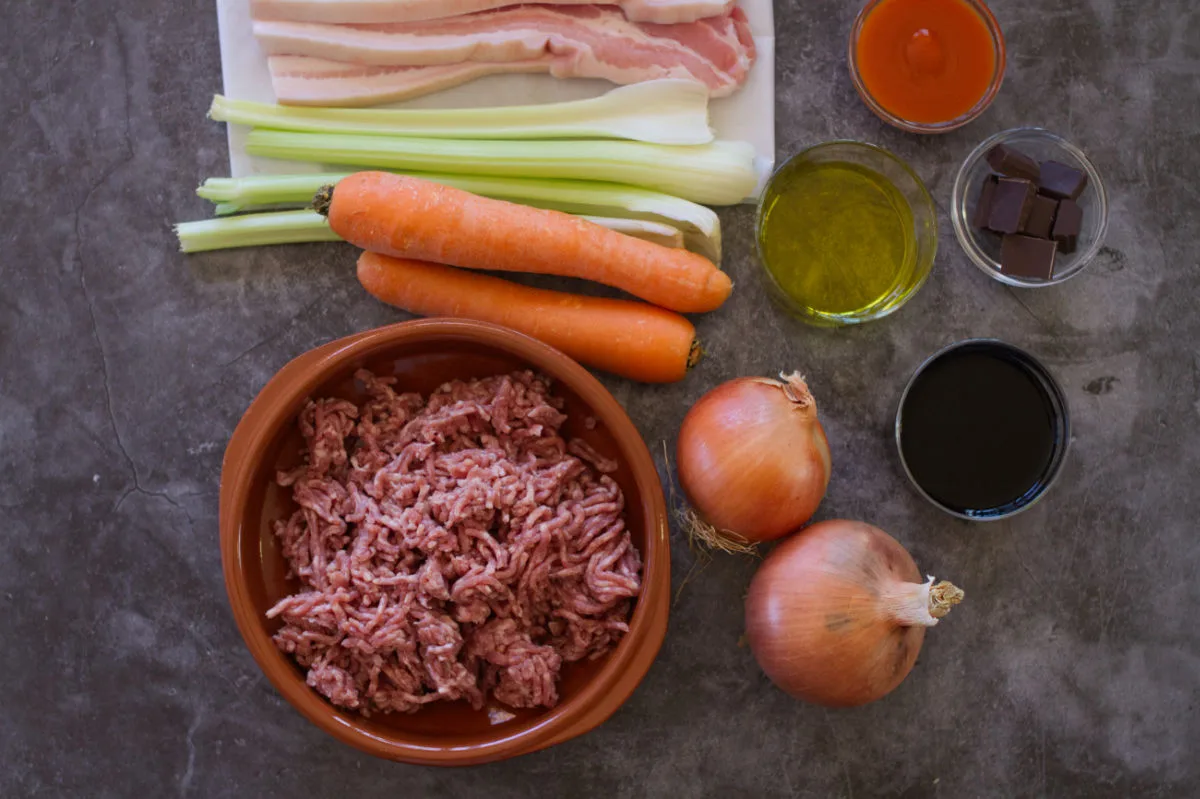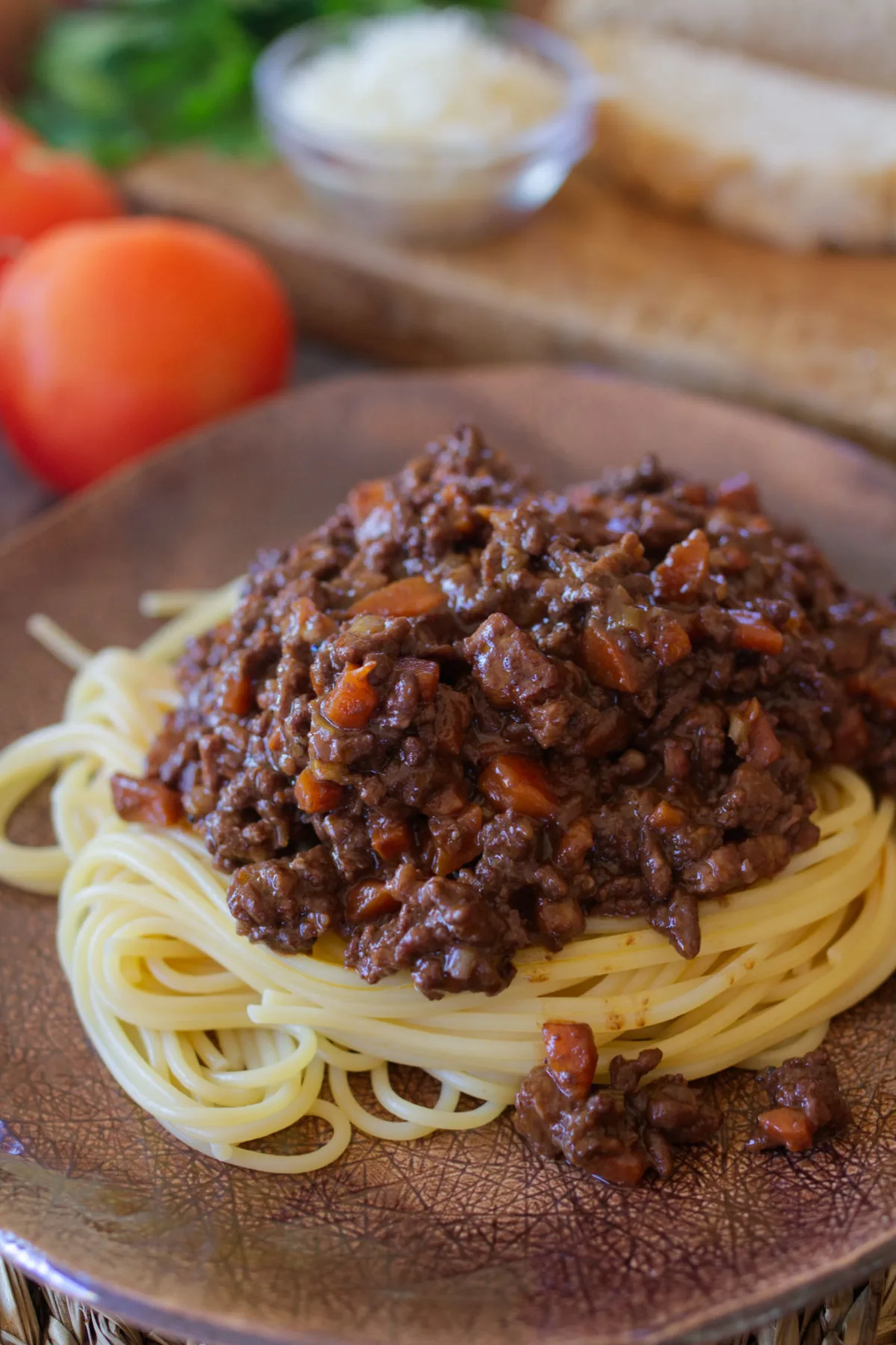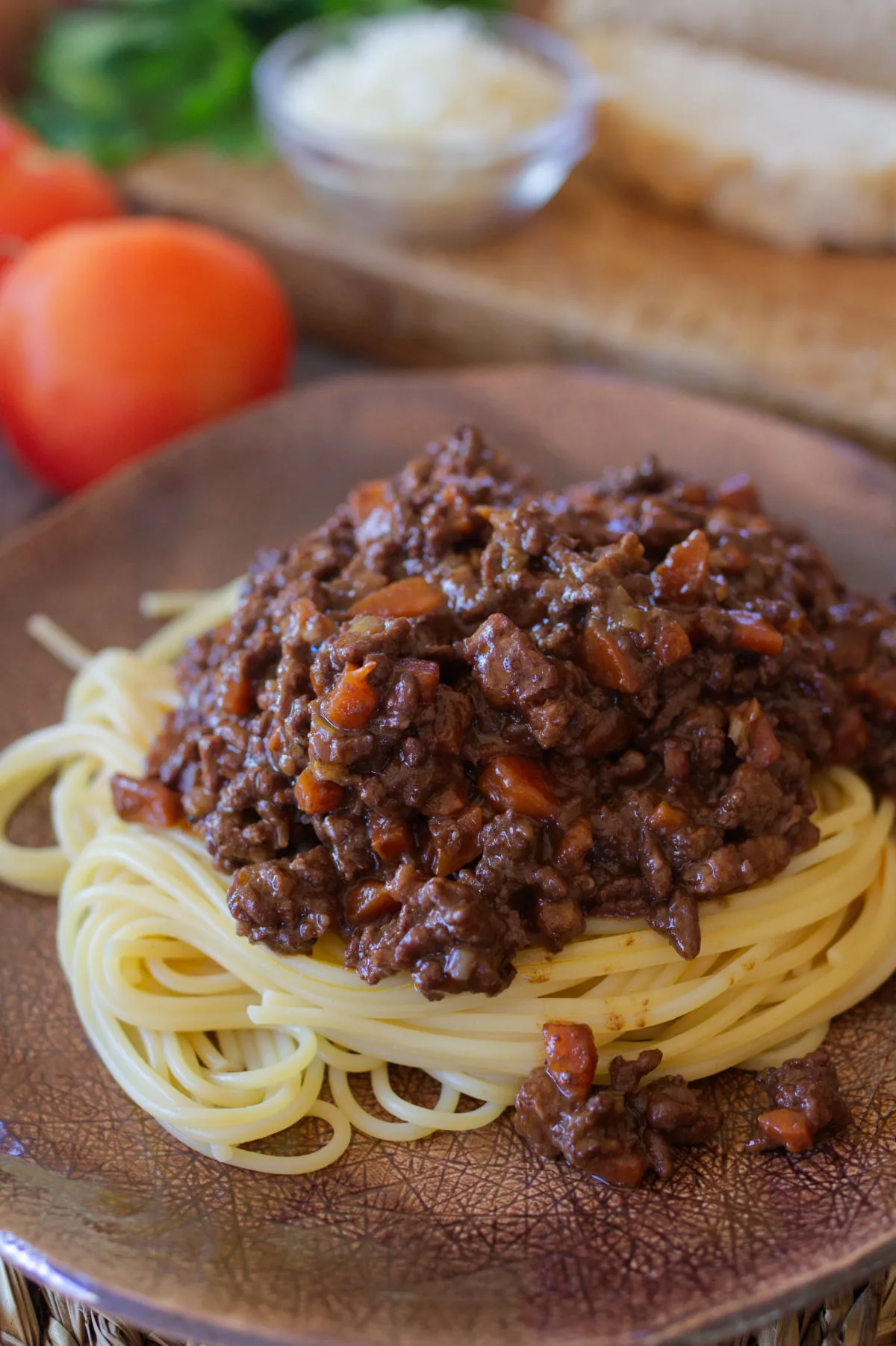Bolognese sauce, or Ragù alla Bolognese, is a beloved Italian classic that has found its way into kitchens around the world. Known for its rich, meaty flavor and velvety texture, a well-executed Bolognese sauce can turn a simple pasta dish into a culinary masterpiece.
But mastering the art of creating the perfect Bolognese sauce is not just about following a recipe; it’s about understanding the nuances, techniques, and a few secret ingredients that can elevate your bolognese sauce to a whole new level.
Join us to find out three cooking tips to boost any bolognese sauce. Plus, we’ll share seven secret ingredients you may want to add to make your own signature bolognese at home. Whether you’re a seasoned home cook looking to refine your skills or a novice eager to learn, these tips will help you achieve Bolognese perfection and make your tastebuds sing.
Table of Contents:

3 Cooking Tips for an Outstanding Bolognese
- Patience is Key
Bolognese sauce is all about building layers of flavor, and one of the most crucial tips is to simmer it slowly over low to medium-low heat. Allow the sauce to bubble gently and reduce over an extended period, typically at least 2-3 hours.
This slow and gradual simmering allows the flavors to meld together, resulting in a rich, complex sauce with a deep umami taste. Stir occasionally to prevent sticking, and add a small amount of liquid (like broth, wine, or milk) if the sauce becomes too thick during this process.
- Use a Mix of Ground Meats
Traditional Bolognese sauce often combines ground beef and ground pork. This combination adds complexity to the flavor and a lovely balance of textures. This is because of the differing fat content in each type of minced meat.
Here’s a general comparison:
Beef Mince (Ground Beef):
- Extra Lean Ground Beef: This typically contains around 5-10% fat.
- Lean Ground Beef: Contains about 15-20% fat.
- Regular Ground Beef: Can contain around 20-30% fat or more.
Pork Mince (Ground Pork):
- Lean Ground Pork: Contains around 10-15% fat.
- Regular Ground Pork: Can have a fat content ranging from 20-30% or more, depending on the cut.
Consider using a mixture of meats, and adjusting the ratios to your preference. Some chefs even swear by including ground veal for even more richness. But trust us, if you follow this recipe with just beef and pork it’s still going to be a very rich bolognese.
- Ingredients Matter (Quality & Quantity)
The quality of your ingredients can significantly impact the final taste of your Bolognese sauce. Use high-quality canned tomatoes or, if fresh, ripe tomatoes that are in season. We prefer ripe on-vine tomatoes as they are sweet and very flavorsome.
Tomatoes
While tomatoes are not considered a base ingredient for bolognese sauce, they are still used, even at least in tomato paste form. A good tip is to use a variety of tomatoes, such as plum tomatoes and cherry tomatoes. Our pick here is to use very ripe on-vine tomatoes and some sun-dried tomatoes (more about this later!).
Wine
While wine is a traditional ingredient in Bolognese sauce, some variations omit it. If you prefer not to cook with alcohol or if you’re preparing the sauce for individuals who should avoid alcohol, just substitute it for some extra stock when you need to add liquid. However, for a more authentic and traditional Bolognese flavor, wine is an essential component.
Red wine is typically used over white, and we prefer red wine as it helps to enhance the rich red color of the sauce and complements the meats. Don’t worry, all of the alcohol content in the wine evaporates during the cooking process so no need to reach for the finest wine in the wine cellar. Red table wine is fine for cooking bolognese sauce.
Olive Oil
Olive oil is also a top priority. Be sure to use good quality extra virgin olive oil. Plenty of recipes will call for the use of butter, but olive oil is healthier and works perfectly with bolognese. You’ll already have plenty of fat from the cuts of meat, so you won’t need to add much oil to this recipe.
Herbs
It may come as a surprise, but most traditional recipes don’t use a lot of herbs. Instead, most rely on fresh, good-quality ingredients to meld together and shine with flavor. Herbs found in a good bolognese recipe will usually be limited to oregano or a bay leaf that is removed before serving.
Seasoning
A well-prepared bolognese sauce recipe shouldn’t need a great deal of seasoning. Seasoning bolognese can actually detract from the layering of flavors that build up gradually over the hours the ingredients simmer away.
It’s also worth mentioning that store-bought minced meat that you find in most supermarkets may also contain a lot of added salt, so be careful before adding more. We recommend adding a little salt (to taste) to flavor your dish only at the end of the cooking process.

Secret Ingredients to Make Your Bolognese Sauce Pop
OK, so there are plenty of great bolognese recipes out there and many people will stick to one of many tried and tested ingredients lists that help to make a traditional bolognese sauce. But, what if you want to make something extra special or just a little different from the norm?
We are talking layers upon layers of flavor and a richness of sauce that has guests licking their lips and demanding more, plus the recipe you used! Well, here we go, these are just a few secret tricks that chefs and home cooks around the world use to make the world’s most popular sauce.
- Milk or cream
- Sun-dried tomatoes
- Anchovies
- Mushrooms
- Sugar
- Dark chocolate
- Pancetta
*Note: While one or two of these ingredients can really help make your bolognese sauce stellar, using too many may lead to an overly rich sauce that is too flavorsome for most palates.
Milk or Cream
While this is definitely not a traditional ingredient for bolognese sauce, there’s a good camp of people who add a little milk or cream to their bolognese sauce during the final stages of cooking. This adds a creamier texture and can soften some of the other sharp flavors such as the bitterness or acidity from the tomato paste or sauce.
If adding milk or cream, remember that the goal is to enhance the sauce’s richness and texture while maintaining the balance of flavors. A typical guideline is to add about 1/2 to 1 cup of milk for every pound (450 grams) of ground meat in the sauce.
Pour in the desired amount of milk or cream after you’ve browned the meat and vegetables. Stir through until you see the milk or cream is absorbed then simmer for around 20-30 minutes.
Sun-Dried Tomatoes
Add a handful of sun-dried tomatoes to your bolognese sauce to really add depth and flavor. Store-bought sun-dried tomatoes typically come packed in olive oil that has infused with the sun-dried tomato flavor. The oil can also be used instead of adding regular olive oil. You can also add homemade sun-dried tomatoes.
Depending on the batch size of bolognese you’re making, a small handful of chopped sun-dried tomatoes will be plenty to add some richness to your bolognese sauce (based on a sauce to serve 4).
Anchovies
Adding a few anchovies that have been packed in good-quality olive oil can really add a salty and flavorsome layer to any bolognese sauce. And don’t worry, you won’t end up with a fishy flavor at all, especially if you use good quality tinned anchovies. Just don’t add too many as just a few will go a long way.
If you use anchovies, use tinned anchovy filets (not the whole fish). Drain the filets of oil and then add them into your sauce as it’s reducing down (just after the sauce has started to slightly thicken). Use a wooden spoon to break up the anchovy and they will gradually melt into the other ingredients. You can thank us later!
Mushrooms
While hanging your hat anywhere in Italy, it’s best to avoid any knowledge of this next tip, but adding mushrooms to bolognese sauce does make a difference (if you are in the hate-mushroom camp, just leave them out completely). Don’t add just any mushroom, go for the undisputed flavor king of the Italian mushroom world: Porcini mushrooms.
If you’re eating them back home, you’ll probably have dried mushrooms — soak them beforehand to rehydrate them by putting them in fresh water for around 30 minutes, then dice them and finally add them to the pot with your bolognese sauce for that earthy flavor they exude.
Sugar
If you taste your bolognese sauce during cooking and notice it’s slightly acidic, add around a teaspoon of sugar. Depending on the size of your bolognese sauce you may need to add more. The sugar helps to balance out the acidity in the sauce and can also help to enhance the sweetness of the tomatoes.
Dark Chocolate
Dark chocolate (dark cooking chocolate that is) is your new best friend when it comes to adding rich layers of flavor to your bolognese sauce. Cooking chocolate typically has much less sugar than regular chocolate and more cocoa butter to help it dissolve. You can use regular dark chocolate, but check how much sugar it contains as you might need to omit additional sugar completely. Likewise, if you have a cooking chocolate that has no sugar, you may want to include sugar to balance it out.
When to add Chocolate to bolognese sauce
During the last 15-20 minutes of cooking, simply break up and add around 1.75 oz / 50g (for 4 people) of dark chocolate to your sauce and stir through.
Pancetta
This next tip comes from Italian chef Gennaro Contaldo’s authentic recipe which adds 5oz / 150 grams worth of good quality pancetta.
Simply dice your pancetta and then add it to a hot pan with a splash of olive oil. Once the pancetta has cooked for a minute or two, add your diced vegetables. As the pancetta has plenty of fat content, you won’t need to use as much oil.
Build Your Own Perfect Bolognese
Now you can pick and choose what to include in your own signature bolognese dish. If you are allergic or don’t like any of the additional ingredients, try adding others. You don’t need to add all of them to achieve the perfect bolognese — that comes down to your own personal preferences. Having said that, we do recommend you try all three cooking tips: let it simmer long, use a mix of meats, and consider your ingredients.



Leave a Reply